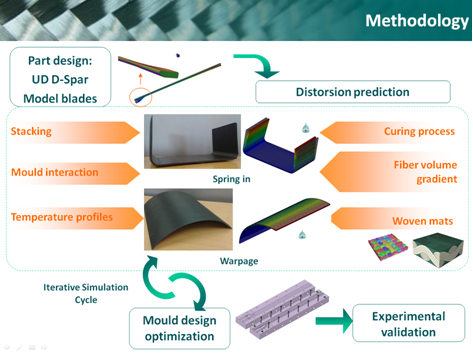Within the scope of the Cleansky Programme, CIDAUT leads a research project aimed at the manufacturing of composite rotorcraft blades with very tight tolerances that will incorporate an Active Gurney Flap mechanism. Active Gurney Flap (AGF) systems enable the rotorcraft to safely operate with reduced tip speeds whilst preserving high performances with reduced fuel consumption and noise; something that constitutes one of the most challenging research areas leaded by the Green Rotorcraft Consortium in the Cleansky Programme: the development of Active Rotor Technologies.

In the ACCUBLADE project, CIDAUT researches on the development of a robust and very accurate moulding process for the manufacturing of carbon fibre model blades that will be used for validation of the AGF systems through wind tunnel tests. Due to the small scale of the model blades, the dimensional requirements for the manufacturing are very tight, less than +/- 0,1mm on the aerodynamic profile. In order to fulfil the tight tolerances, not only the mould must be machined with high precision means, but also the cavity design must be defined with special consideration for minimizing any distortion during the process.
The analysis of potential process-induced distortions, such as warping or spring-in, has been carried out by means of process simulations based in accurate material parameters identified through laboratory material characterisation tests. The influence of different material and processing parameters including the weave pattern, ply stacking, mould interaction, curing temperature and pressure has been experimentally characterised and correlated with the simulation models. These have been developed for the prediction of the distortions that would appear during the processing of the model blades. Using this methodology, the design of the cavity can be defined to fulfil the required tolerances.

During the near to follow validation stage, CIDAUT will partake in the processing of the model blades and the non destructive and destructive inspection tests that will be carried out to demonstrate the functionality of the tools and to validate the design methodology.
In particular, the following outcomes from the ACCUBLADE project will stand out among the technological expected results:
- An optimization methodology for tooling and moulds design based in accurate distortion simulations accounting for different thermal coefficients of the composite materials.
- A reduction in current development costs and lead-times for aeronautic composite parts, that usually need expensive and long lasting trial and error procedures to be carried out before a suitable mould cavity design is experimentally determined.